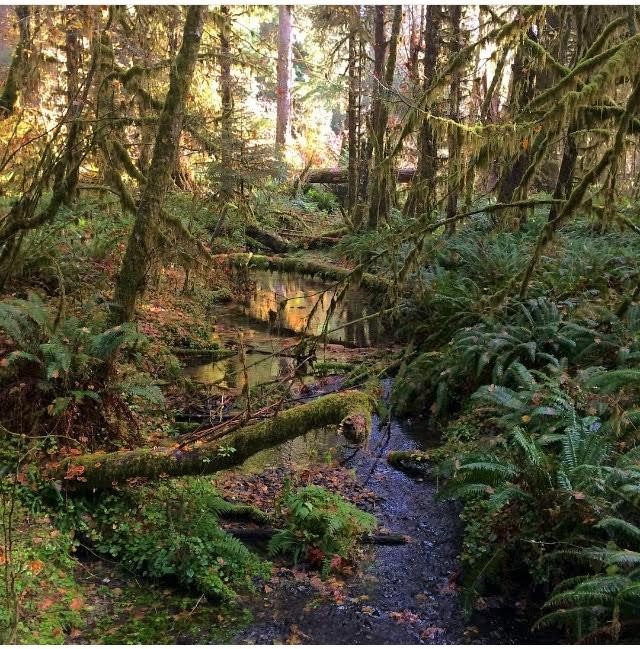
The Magic of Moss
In many places around the world, mosses are often overlooked. Here in the cool, damp, Pacific Northwest, the green carpets and drapery that fill our forests are hard to ignore.
Mosses are the oldest plants on the planet and the very first to colonize land 350 million years ago. They lack flowers, vascular tissue, and roots, yet occupy almost every habitat (except salty environments) on Earth. Mosses are often considered primitive and simple, and therein lies the key to their success.
While flowering plants rely on insects to transport their pollen from plant to plant, mosses rely on water. For moss to sexually reproduce, there must be a continuous bridge of water between the male and female parts for the sperm to swim to the egg where fertilization occurs. Once the sperm fertilizes the egg, a sporophyte forms that releases clouds of small, light, spores that can travel far distances to find a suitable location for germination. Mosses do not have roots but have thread-like structures called rhizoids to help them attach or anchor to a surface. The rhizoids are not absorptive, thus cannot take up water or nutrients like roots. However, mosses have fewer nutritional needs and can survive where vascular plants might struggle such as stones, bark, and rock walls.

Mosses are not only successful in being widespread and abundant, they also play a huge ecological role as a water bearer. They hold and store water and release it slowly into their environment. They create humidity in the air and a moist seedbed in the soil. Their moisture holding capacity also speeds up the nutrient cycle in the forest. For example, moss on a fallen log keeps the log damp making it more suitable for decaying fungi to break the log down and recycle its nutrients back into the forest system.
While there is an entire food chain of invertebrates within the moss, they are so well chemically defended and lack nutrients such as sugar and proteins that they are not a common food source. Birds might peck at the sporophytes but will more commonly use moss as a nesting material. Bonus: Most mosses also have anti-microbial properties that keep the nest hygienic after being soiled with baby bird poop!
Although their small size, microscopic features, and lack of common names often leave them in the unknown, the enormous diversity of mosses on the Olympic Peninsula provides us the opportunity to discover a whole magical world of different shapes, colors, and structures. At the end of a very dry season, the forest is relying on every last bit of moisture stored in moss. For the moss, the fires, the fish, and life in the northwest, it is time for rain.

Want to learn more about the world of moss? This book and author are HIGHLY recommended by River Center staff! Click here to buy a copy of this spectacular book from our online bookstore!
“Gathering Moss will appeal to a wide range of readers, from bryologists to those interested in natural history and the environment, Native Americans, and contemporary nature and science writing.”
photo credits: Jenna Ziogas

